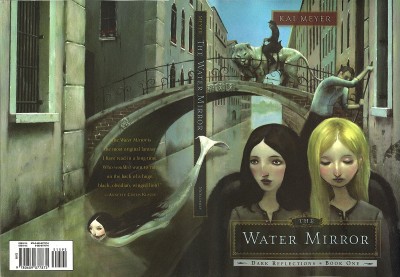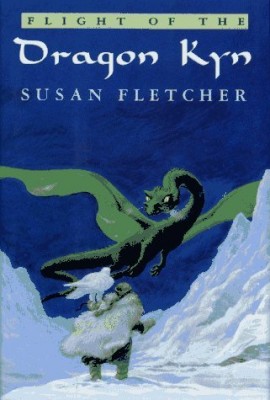Reviewer: Emera
Date read: 8.3.2013
Book from: Personal collection
“Stories do not serve me. Even my own stories.”
Caitlín Kiernan‘s The Red Tree and The Drowning Girl form a diptych: red and blue, burial and drowning, the chthonic and the oceanic. They’re mirror-image confessionals struggling with grief, mental illness, suicide, inexplicable loss, inexplicable hauntings. Present-day hauntings as crucibles for pain, and art, folded in with the matter of folklore and urban legends – that is, hauntings passed down through time, what Imp in The Drowning Girl terms, with a kind of vehement sociological exactitude, “pernicious memes.” (As if naming the thing will better pin it down, fix its dimensions. I suspect the vehemence is partly ironic.)
The Red Tree has a ferocious heat to it, a molten core exerting terrible gravity – the boiler in the basement of the Overlook. There’s only one way in to Sarah Crowe’s story, and it’s down. Catabasis without anabasis.
Like Sarah, Imp circles around and around the places of greatest hurt, making darting rushes towards them, then leaping back again just as quickly; being slowly, slowly drawn on and in. But as Imp makes her way through the waterscape of her memories, slipping from current to current, tidal pool to tidal pull, we gradually become aware that for her, there might be a return. Her story is not entirely about consumption, about the claiming of a sacrificial victim; it is also about bearing witness, about choosing or being chosen to bear witness, and it is as a witness that she will survive. (Her survival of Albert Perrault’s art exhibit in particular, and her movement in memory around it, reminded me of another of Kiernan’s haunted witness-narrators, in the science-fiction short “A Season of Broken Dolls.”)
Because one thing The Drowning Girl does that The Red Tree doesn’t, is show us, make us bear witness to, the bodies of the dead. Bodies, and unfamiliar or outright violent transformations of them, mutability and violation, are one of its principle preoccupations (again as in “Broken Dolls,” and countless other pieces of Kiernan’s fiction). The Little Mermaid, werewolves, Imp’s transsexual girlfriend Abalyn, all are considered as superimpositions of multiple identities, and multiple physical beings. (Though Abalyn resists Imp’s initial attempts at narrativizing her experience as a transsexual woman – telling her that she was “brave” for undergoing surgery, for example.)
In The Red Tree, the dead are disappeared, beneath the roots of the oak tree, or simply into a black obscurity, like the endless void of the basement spreading under Sarah Crowe’s house. But in The Drowning Girl, the literal bodies of the dead are tossed back out again, out of the deeps, for Imp, for her fellow witnesses in fiction and in history, and for us to contemplate from shore. We see that they’ve been worked on, but not, of course, what’s been working on them. The recurring image of a beautiful girl, drowned and bisected – gone from ribcage down, like half-rotted Hel of Norse mythology – becomes a macabre sister to the image of the mermaid. The blame is put on scavenging sharks, but who’s to say what was really responsible for the dissolution of body, life, memory, out there in the blue. For those victims of the deep, the physical violation seems besides the point.
Still, it’s enough to wound their witnesses in turn. Imp assembles snippets of song, poetry, fiction, art, history, and legend around herself like talismans, weaves them densely, as if glancing from juncture to juncture of the resulting web, assessing its intersections and symmetries, will render her own experience of being haunted, twice, by a siren or a werewolf named Eva Canning, more comprehensible, more forgivable.
It doesn’t, of course; it just makes it deeper, more terrible. “Lost paintings, daughters of mystery, mysteries and the pieces aren’t ever going to stop falling into place. Or falling, anyway. One Eva, but two paintings.” I found myself thinking about the all the twinnings, the uncanny reflections and resonances and multiplications, as two kinds (more twins) of sounding: echoes sent up the wellshaft by Imp’s investigations, her attempts to sound the depths.*
But the denseness of the weaving, and the mind of the weaver, are beautiful, too. Sarah Crowe is furious in her hurt; Imp is just as much a wounded animal, but a gentler one, with a quietly mordant wit. The essential elegance of her thoughts, as they flow from tale to tale, image to image, is not diminished by their desperation – rather, that intentness and need invests them with elemental power, the ability to peel back the surface of fairy tale and urban legend, expose the bone. Not as a violation (“stories do not serve me”), but as a revelation of potency and meaning, of one possible essential shape among many. I think Angela Carter would have approved.
* I just realized that I gravitated towards this pun because I’ve used it once before on this blog, in this post about a Jack Gilbert poem.
Go to:
Caitlín R. Kiernan: bio and works reviewed
“So Runs the World Away,” by Caitlin R. Kiernan (2001): review by Emera
Alabaster, by Caitlin R. Kiernan (2006): review by Emera
The Red Tree, by Caitlin R. Kiernan (2009): review by Emera

